-
 Bitcoin
Bitcoin $107,467.9126
1.26% -
 Ethereum
Ethereum $2,447.5288
-0.12% -
 Tether USDt
Tether USDt $1.0005
0.00% -
 XRP
XRP $2.1921
0.13% -
 BNB
BNB $647.2897
0.50% -
 Solana
Solana $144.8627
-0.37% -
 USDC
USDC $0.9996
-0.03% -
 TRON
TRON $0.2732
0.10% -
 Dogecoin
Dogecoin $0.1652
-0.18% -
 Cardano
Cardano $0.5700
-2.87% -
 Hyperliquid
Hyperliquid $37.0274
-1.81% -
 Bitcoin Cash
Bitcoin Cash $484.6957
0.19% -
 Sui
Sui $2.7354
-2.19% -
 Chainlink
Chainlink $13.1727
-1.49% -
 UNUS SED LEO
UNUS SED LEO $8.9978
-0.04% -
 Stellar
Stellar $0.2421
-2.33% -
 Avalanche
Avalanche $17.5633
-3.51% -
 Toncoin
Toncoin $2.8476
-1.94% -
 Shiba Inu
Shiba Inu $0.0...01166
-0.56% -
 Litecoin
Litecoin $85.1071
0.09% -
 Hedera
Hedera $0.1502
-2.96% -
 Monero
Monero $310.2774
-1.64% -
 Dai
Dai $0.9999
-0.01% -
 Polkadot
Polkadot $3.3584
-1.88% -
 Ethena USDe
Ethena USDe $1.0003
-0.04% -
 Bitget Token
Bitget Token $4.4443
2.90% -
 Pi
Pi $0.6242
14.04% -
 Uniswap
Uniswap $6.9774
-2.86% -
 Pepe
Pepe $0.0...09535
-5.05% -
 Aave
Aave $256.7574
-3.35%
Can you recover within three days after falling below the sixty-day line with shrinking volume?
A cryptocurrency falling below the sixty-day line with shrinking volume may signal weakening momentum, but a quick recovery could indicate strong support and potential bullish reversal.
Jun 26, 2025 at 01:50 pm
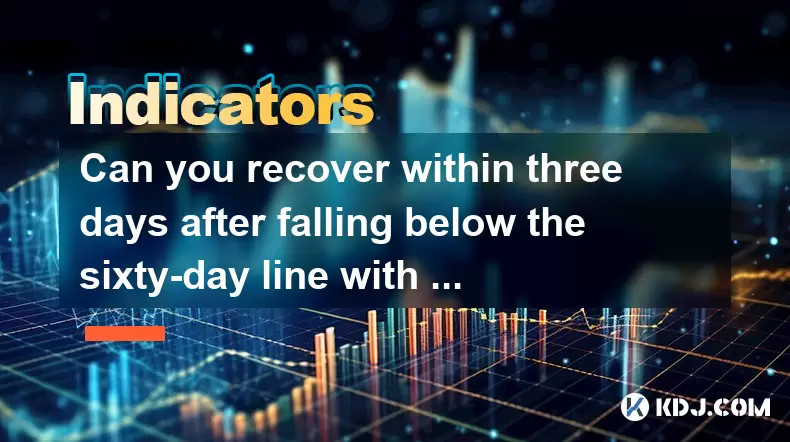
Understanding the Sixty-Day Line in Cryptocurrency Trading
In cryptocurrency trading, the sixty-day line is a technical analysis tool used by traders to determine the long-term trend of an asset. It represents the average price of an asset over the last 60 days and acts as a dynamic support or resistance level. When the price of a cryptocurrency falls below this line, it often signals a potential shift in market sentiment from bullish to bearish.
Traders closely monitor how the price interacts with the sixty-day moving average because breaking below it can trigger selling pressure from automated systems and algorithmic traders. This phenomenon is particularly pronounced when accompanied by shrinking volume, which indicates reduced interest or participation from the market.
The Significance of Shrinking Volume After Falling Below the Sixty-Day Line
When a cryptocurrency's price drops below the sixty-day line and is followed by shrinking volume, it may suggest that the decline isn’t being driven by strong selling pressure. Instead, it could be due to a lack of buying interest or a consolidation phase.
However, interpreting this scenario requires caution. While shrinking volume might indicate a pause rather than panic, it doesn't guarantee a recovery. The key lies in understanding whether the drop was caused by temporary factors or if it reflects deeper issues within the project or broader market conditions.
- Shrinking volume can mean fewer sellers are active, potentially limiting downside momentum.
- Low volume also suggests hesitation among buyers, which could delay any meaningful rebound.
This context is essential for traders deciding whether to hold, buy the dip, or exit their positions.
Historical Patterns and Recovery Timeframes
Historically, cryptocurrencies that fall below the sixty-day line have shown varied recovery patterns. Some assets bounce back quickly, especially if the drop was due to short-term volatility or external news events. Others may take weeks or even months to regain strength.
The three-day window mentioned in the question is critical in short-term trading strategies. If a recovery occurs within this period, it may indicate strong support levels or institutional buying activity. However, not all assets will respond the same way, and several variables influence the outcome:
- Market capitalization: Larger-cap cryptocurrencies tend to recover faster due to higher liquidity.
- On-chain metrics: Active addresses and transaction volumes can provide insight into underlying demand.
- Macro environment: Broader market trends, such as Bitcoin’s price movement or regulatory news, play a significant role.
Analyzing historical data from platforms like TradingView or CoinMarketCap can help identify patterns specific to certain coins or market phases.
Technical Indicators That Support a Three-Day Recovery
To assess the likelihood of recovery within three days after falling below the sixty-day line, traders rely on additional technical indicators:
- Relative Strength Index (RSI): An RSI reading below 30 may indicate oversold conditions, increasing the chances of a bounce.
- MACD (Moving Average Convergence Divergence): A bullish crossover near the sixty-day line can signal a potential reversal.
- Volume Profile: Identifying value areas where previous accumulation occurred can highlight possible support zones.
Combining these tools with price action around the sixty-day line offers a more comprehensive view. For instance, if the price closes above the sixty-day line within the next 24–72 hours and is supported by rising volume, it strengthens the case for a recovery.
- Monitoring candlestick formations such as hammer candles or morning stars can further confirm bullish reversals.
- Resistance levels just above the current price should be watched to gauge how far the recovery might extend.
Steps to Evaluate and Act on a Potential Recovery Signal
If you're considering entering a trade based on this pattern, follow these steps carefully:
- Confirm the breach: Ensure that the price has indeed closed below the sixty-day line on your preferred time frame (e.g., daily chart).
- Check volume trends: Use volume indicators to verify whether the drop coincided with shrinking volume.
- Analyze supporting indicators: Look at RSI, MACD, and Bollinger Bands to find confluence with the price action.
- Set entry points: Consider entering a position if the price shows signs of rejection from the sixty-day line, such as a bullish engulfing candle.
- Place stop-loss orders: Protect your investment by placing a stop below the recent low or the sixty-day line itself.
- Monitor exit opportunities: Take partial profits near known resistance levels or use trailing stops to capture extended moves.
Each step must be executed with precision to avoid emotional decision-making. Using alerts on platforms like Binance or Bybit can help you stay updated without constantly monitoring charts.
Risk Management and Psychological Factors
Trading around the sixty-day line carries risks, especially in volatile markets like crypto. Even if the technical setup looks promising, unforeseen events—such as exchange outages, regulatory changes, or whale movements—can disrupt recovery attempts.
Psychologically, it's important to remain disciplined and avoid chasing a move simply because the price appears cheap. Traders should also be prepared for false breakouts or prolonged consolidation phases. Setting clear risk-reward ratios before entering any trade is crucial.
- Always allocate only a small percentage of your portfolio to any single trade.
- Avoid averaging down blindly if the price continues to fall after your initial entry.
- Keep a trading journal to review outcomes and refine future decisions.
These practices help maintain consistency and reduce the impact of FOMO (fear of missing out) or panic selling.
Frequently Asked Questions
What does it mean if a cryptocurrency closes above the sixty-day line after falling below it?
Closing above the sixty-day line after a brief drop may indicate renewed buying interest and a potential resumption of the uptrend. Traders often see this as a positive sign, especially if supported by increasing volume.
Can I rely solely on the sixty-day line for trading decisions?
No, the sixty-day line should be used alongside other technical indicators and fundamental analysis. Relying on a single metric increases the risk of misinterpreting market conditions.
Is a three-day recovery common in altcoins compared to Bitcoin?
Bitcoin tends to show more predictable behavior around major moving averages due to its dominance and liquidity. Altcoins can be more erratic, so recovery timing may vary significantly depending on the coin's market cap and sector.
How do I set up alerts for when a cryptocurrency crosses the sixty-day line?
Most trading platforms, including TradingView, Binance, and CoinMarketCap, allow users to set price alerts or custom indicators that notify them when an asset crosses key moving averages.
Disclaimer:info@kdj.com
The information provided is not trading advice. kdj.com does not assume any responsibility for any investments made based on the information provided in this article. Cryptocurrencies are highly volatile and it is highly recommended that you invest with caution after thorough research!
If you believe that the content used on this website infringes your copyright, please contact us immediately (info@kdj.com) and we will delete it promptly.
- DOGE, BlockDAG, and Coin Airdrops: The New Wave of Crypto Opportunities
- 2025-06-26 18:45:12
- Neo Pepe and the Crypto Presales Popping in June 2025
- 2025-06-26 18:45:12
- Bitcoin, DeFi Tokens, and Relist Moves: What's Hot in Crypto Right Now
- 2025-06-26 18:30:11
- Binance, Bitcoin, and Altcoins: Navigating the Crypto Landscape
- 2025-06-26 19:05:12
- Bitcoin's Bull Flag: Technical Analysis, Crypto Market Sentiment, and Price Predictions
- 2025-06-26 19:05:12
- Pi Network, Volatility, and Pi2Day: Navigating the Hype
- 2025-06-26 19:10:14
Related knowledge
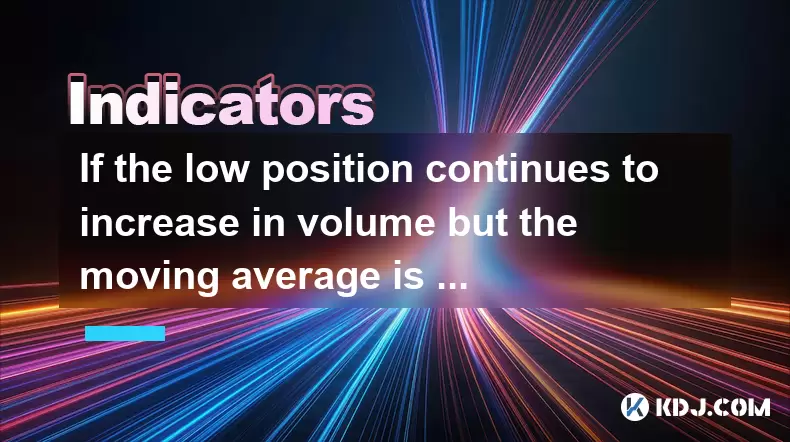
If the low position continues to increase in volume but the moving average is still short, should we wait and see?
Jun 26,2025 at 08:07pm
Understanding the Scenario: Low Position with Increasing VolumeIn the cryptocurrency market, traders often encounter situations where a particular asset is trading at a relatively low price level (referred to as a 'low position'), yet there is a noticeable increase in trading volume. This phenomenon can be confusing because it suggests that more market ...
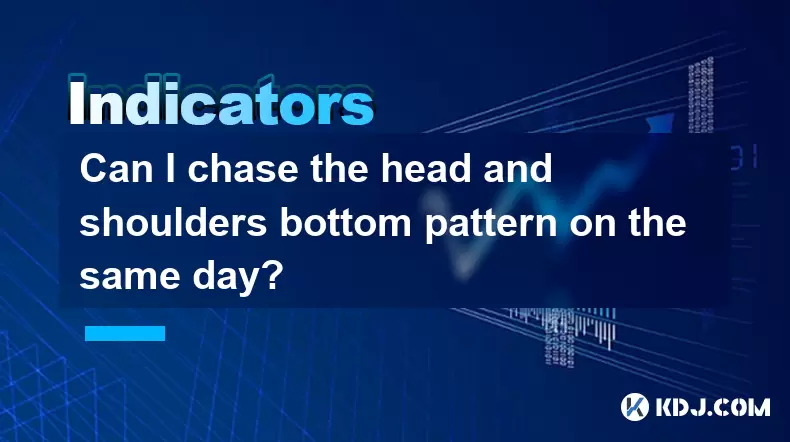
Can I chase the head and shoulders bottom pattern on the same day?
Jun 26,2025 at 06:14pm
Understanding the Head and Shoulders Bottom Pattern in Cryptocurrency TradingThe head and shoulders bottom pattern, also known as the inverse head and shoulders, is a reversal chart pattern commonly observed in cryptocurrency price charts. It signals a potential shift from a downtrend to an uptrend. The structure consists of three distinct lows: the lef...
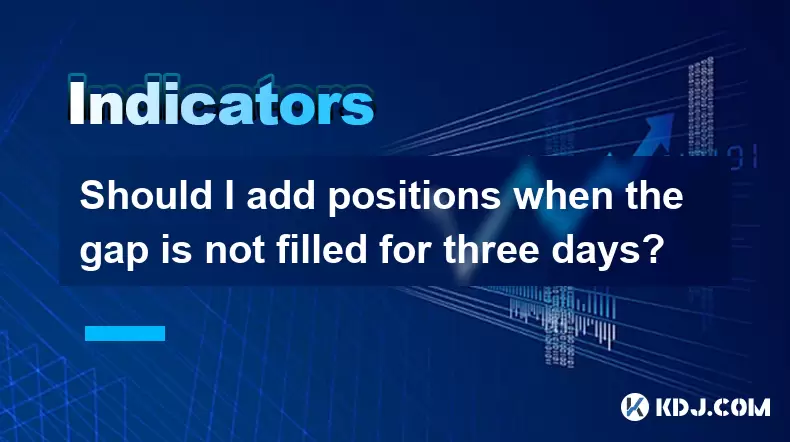
Should I add positions when the gap is not filled for three days?
Jun 26,2025 at 07:49pm
Understanding the Concept of Gaps in Cryptocurrency TradingIn cryptocurrency trading, a gap occurs when the price of an asset opens significantly higher or lower than its previous closing price, with no trading activity taking place in between. This phenomenon is common due to the 24/7 nature of crypto markets and external events such as news releases, ...
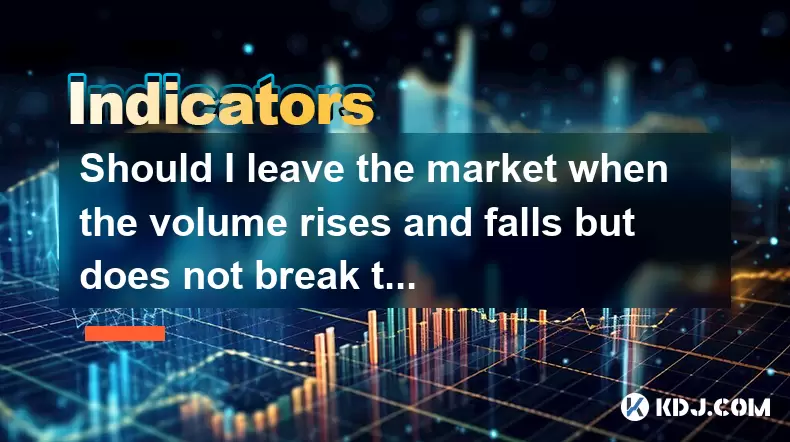
Should I leave the market when the volume rises and falls but does not break the 5-day line?
Jun 26,2025 at 06:08pm
Understanding Market Volume and the 5-Day Moving AverageWhen traders talk about market volume, they're referring to the total number of shares or contracts traded during a specific period. In cryptocurrency trading, volume plays a crucial role in confirming trends and predicting potential reversals. The 5-day moving average (5DMA) is a short-term indica...
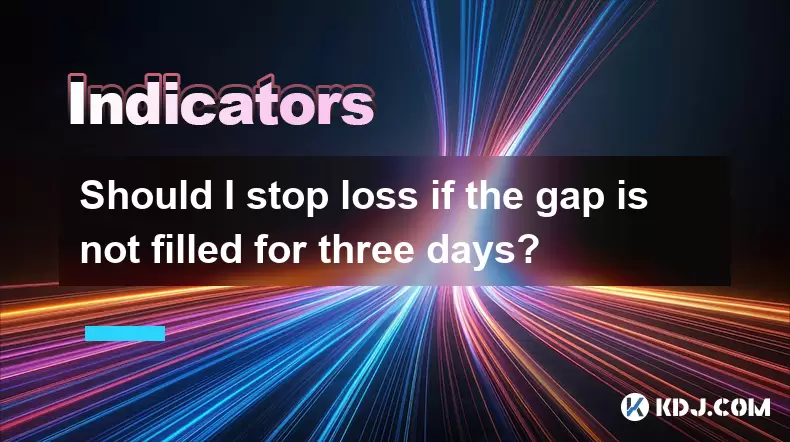
Should I stop loss if the gap is not filled for three days?
Jun 26,2025 at 06:35pm
Understanding Gaps in Cryptocurrency TradingIn cryptocurrency trading, gaps refer to areas on a price chart where the asset's price jumps from one level to another without any trading occurring at the intermediate levels. These gaps can appear due to sudden market movements, often influenced by news events, macroeconomic data releases, or shifts in inve...
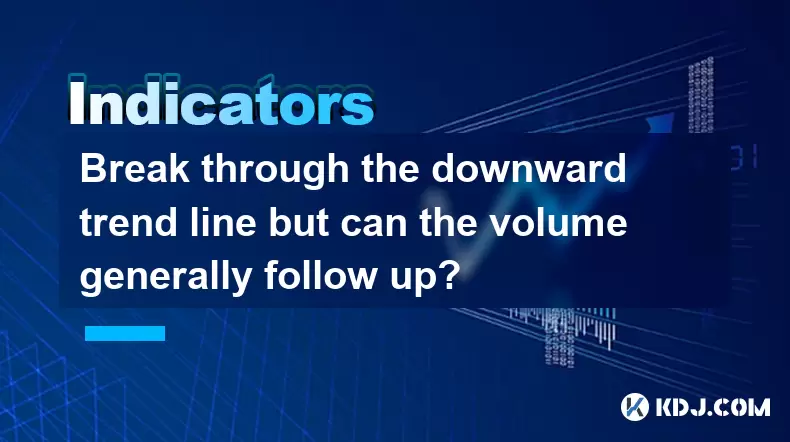
Break through the downward trend line but can the volume generally follow up?
Jun 26,2025 at 05:28pm
Understanding the Significance of Breaking a Downward Trend LineIn technical analysis, a downward trend line represents a resistance level formed by connecting two or more high points in price action. When the price breaks above this line, it suggests that the selling pressure may be weakening and that buyers are gaining control. This is often seen as a...

If the low position continues to increase in volume but the moving average is still short, should we wait and see?
Jun 26,2025 at 08:07pm
Understanding the Scenario: Low Position with Increasing VolumeIn the cryptocurrency market, traders often encounter situations where a particular asset is trading at a relatively low price level (referred to as a 'low position'), yet there is a noticeable increase in trading volume. This phenomenon can be confusing because it suggests that more market ...

Can I chase the head and shoulders bottom pattern on the same day?
Jun 26,2025 at 06:14pm
Understanding the Head and Shoulders Bottom Pattern in Cryptocurrency TradingThe head and shoulders bottom pattern, also known as the inverse head and shoulders, is a reversal chart pattern commonly observed in cryptocurrency price charts. It signals a potential shift from a downtrend to an uptrend. The structure consists of three distinct lows: the lef...

Should I add positions when the gap is not filled for three days?
Jun 26,2025 at 07:49pm
Understanding the Concept of Gaps in Cryptocurrency TradingIn cryptocurrency trading, a gap occurs when the price of an asset opens significantly higher or lower than its previous closing price, with no trading activity taking place in between. This phenomenon is common due to the 24/7 nature of crypto markets and external events such as news releases, ...

Should I leave the market when the volume rises and falls but does not break the 5-day line?
Jun 26,2025 at 06:08pm
Understanding Market Volume and the 5-Day Moving AverageWhen traders talk about market volume, they're referring to the total number of shares or contracts traded during a specific period. In cryptocurrency trading, volume plays a crucial role in confirming trends and predicting potential reversals. The 5-day moving average (5DMA) is a short-term indica...

Should I stop loss if the gap is not filled for three days?
Jun 26,2025 at 06:35pm
Understanding Gaps in Cryptocurrency TradingIn cryptocurrency trading, gaps refer to areas on a price chart where the asset's price jumps from one level to another without any trading occurring at the intermediate levels. These gaps can appear due to sudden market movements, often influenced by news events, macroeconomic data releases, or shifts in inve...

Break through the downward trend line but can the volume generally follow up?
Jun 26,2025 at 05:28pm
Understanding the Significance of Breaking a Downward Trend LineIn technical analysis, a downward trend line represents a resistance level formed by connecting two or more high points in price action. When the price breaks above this line, it suggests that the selling pressure may be weakening and that buyers are gaining control. This is often seen as a...
See all articles
























































































